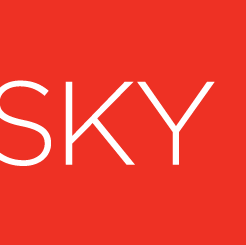The influence of the millennial generation cannot be overstated. Here’s some numbers according to Dan Schawbel of Forbes: there are 80 million millennials in America. They represent a quarter of the US population. Each year, they spend about $200 billion collectively. Because of their purchasing power and cultural influence, companies are jockeying to figure out what’s the best way to market to millennials.
Authentic Content
Millennials object to traditional advertising in all its forms. Banner ads? They use ad-blocking software. Print ads? Clunky and inauthentic. Pop-over ads? Obtrusive and annoying. Video ads on streaming platforms? They’re gone to another device or another tab.
Since millennials refuse to engage with traditional forms of advertising, savvy marketing departments are switching to content-driven and
influencer-based models. Searching for content is both a pleasurable pastime and a form of independent research. Millennials might dig through
user-created reviews, videos, articles, graphics and share content that they feel further defines their personal brand. These might be assembled on a blog, a Facebookpage, or a Twitter feed. From here, they make purchases accordingly.
Millennials trust their peers—even if they don’t know them personally. In the digital space, legitimacy is cultivated through shares, likes, retweets, and reblogs. Influencer marketing represents the new frontier in reaching millennials; a study by bazaarvoice revealed that 84% are influenced by
user-generated content. User-generated content reads as authentic because it is, to an extent, unbranded. Instead of demanding a consumer’s attention, it offers a valuable, mutually-beneficial service.
Inbound Marketing
Outbound marketing refers to direct methods of ad-placement. Magazine advertisements, direct mail campaigns, and radio spots are all examples of outbound marketing. Outbound marketing is virtually obsolete for millennials. These methods are too corporate and impersonal. When faced with such brazen product placement, millennials ask, “Who cares? What does that do for me?”.Inbound marketing is a better method of engaging with consumers. Inbound marketing is when an ad takes the form of informative content—e-books, blog-posts, how-to videos. According to millennial marketing specialist Ryan Jenkins, millennials are 44% more like to trust experts compared to other generations. Whenever brands can collaborate or take on the role as an authority in a field, millennials are far more likely to engage. However, content does not necessarily need to demonstrate its value by being instructional. Movie trivia, Buzzfeed listicles, and viral videos are all examples of inbound marketing that does not take the form of a how-to.
So what does this look like in practice? One innovative example would be the YouTube channel Will It Blend. Over the past six years, in order to highlight the versatility and power of its blenders, Blendtec has created an iconic series of viral videos in which absurd objects (cassette tapes, iPhones, golf balls) are run through its high-powered blender until they are dust. The videos go viral because they are absurd and hilarious, while also showcasing the essential aspect of the product. To supplement these popular humorous videos, Will It Blend also produces content that is more instructional, such as recipes for real smoothies and sauces and episodes specific to holidays.
Collaboration is Key
Many companies have started offering direct opportunities to collaborate. This strategy is effective for two reasons—it engages directly with the influencers that millennials trust and also produces content that is undeniably authentic in its look and feel. Recently, brands as diverse as Lay’s, AirBnb, Nissan, and Coca-Cola have engaged in brand collaborations with their audiences. These campaigns tend to make heavy use of social media—those who have “liked” a page on Facebook or an army of Instagram followers are a ready-in-waiting audience for a wide variety of collaborative marketing campaigns.
Millennials constitute the most influential buying demographic in America right now. However, their consumption habits have left those well-versed in traditional forms of marketing perplexed. Any campaign that seeks to target millennials will have to shirk these traditional forms of marketing in favor of large-scale content creation, brand collaboration, and inbound marketing.

